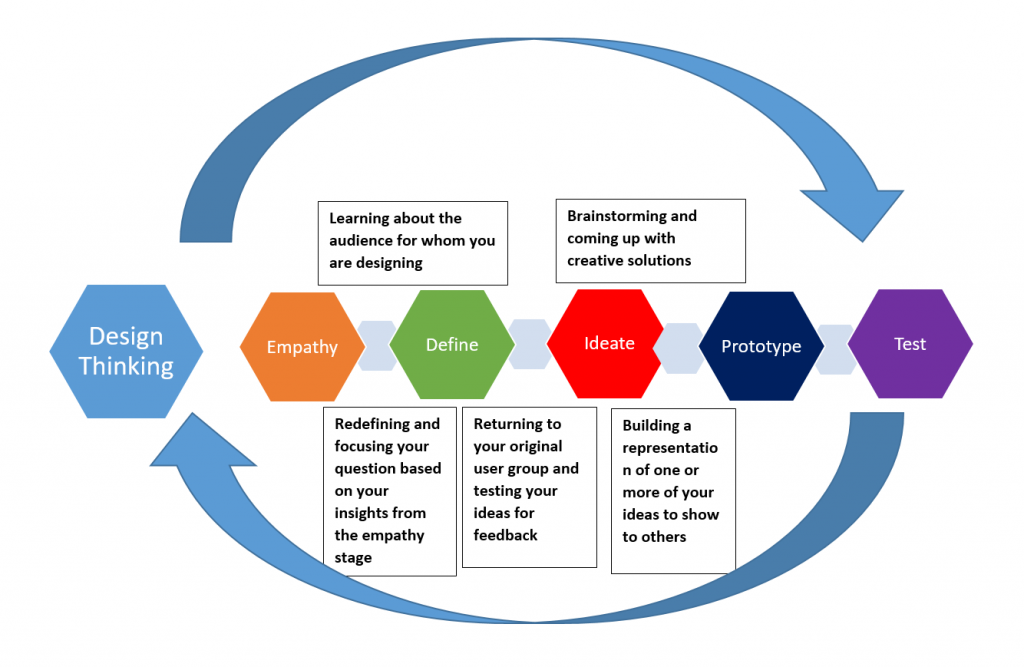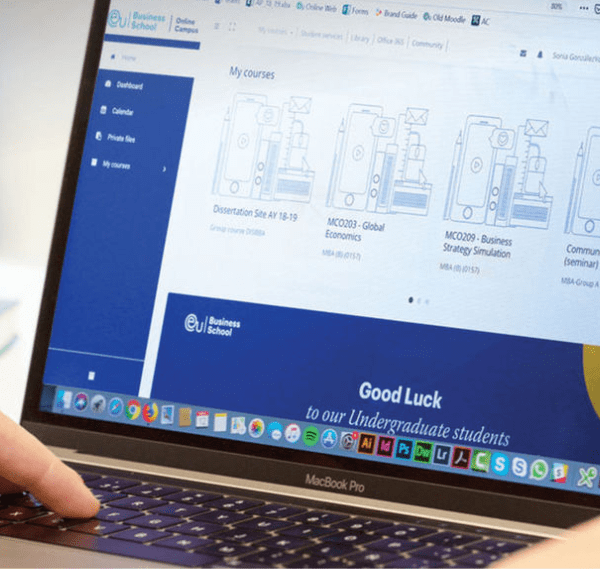Design Thinking (DT) is a way of solving complex business problems using empathy, ideation, and experimentation. Its methodology has helped businesses ranging from startups to larger organizations tap into their target markets by acting on changes in our behavior and environment. It’s now being taught to professionals across various sectors all over the world and is encouraged at every stage of business.
The Process of Design Thinking
Created by David Kelley, the founder of design firm, IDEO, Design Thinking takes a more human-centered approach to understanding users, challenging existing assumptions and creating innovative products and services. The process consists of 5 phases:
1. Empathize
The first phase, Empathize, aims for the design team to gain a deeper understanding of the problem through intense research. Here, the team must also explore the users’ needs.
2. Define
The Define stage is where the design team gathers all data and carries out an analysis and synthesis in order to further define the problem.
3. Ideate
Following this is Ideate, where assumptions are challenged, and creative solutions are put forth in the design thinking process. This phase builds on the previous phases and looks to produce a testable solution before further experimenting.
4. Prototype
The next phase is Prototype, the experimental phase. Here, design teams will start to create a few small versions of the product or system that are directly related to previous phases.
5. Test
Lastly, there is the Test phase. Designers test the final product or system, but worth mentioning is that it’s iterative. The phrase “fail early, fail often” is often used to describe this phase. The emphasis here is placed on creating prototypes fast, testing them out on real users, and then returning to the drawing board for improvements or modifications.

The Influence and Impact of Design Thinking
Design Thinking has become popular ever since high-profile organizations like Google, Apple and Airbnb started using it with great success. Its appeal is that it focusses more on the end user and aims to capture their mindset. It has even been applied to other sectors like healthcare, where it was used to build a better MR scanner experience for children, and self-improvement, where it helped people improve their lives by mapping out their paths to better health and wellness. Other areas where Design Thinking has successfully worked is education, finance, journalism, retail and transportation.
As expected, DT has received much criticism, some going as far as saying that it offers little more than its buzzworthiness. Graphic designer, Natasha Jen, points out that DT is human intuition that doesn’t justify its expensive price. For new businesses starting up on a limited budget, the process could be considered an unjustified expense. Moreover, as new models of thinking enter the mainstream, established models are often put in jeopardy. Thus, individuals and companies sustaining themselves on an established model often put up resistance to welcoming a new way of doing things.
Call it what you will, Design Thinking has contributed greatly to startups as much as Fortune 500 companies looking to improve products and services. Ideation, innovation, synthesis and prototyping is making our lives easier in many ways.
With EU Business School’s BA in Digital Business, Design & Innovation, students will learn how to develop ideas for innovative products and services and how to use theoretical and applied insights as tools in new product development.










